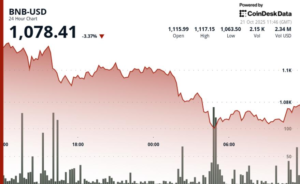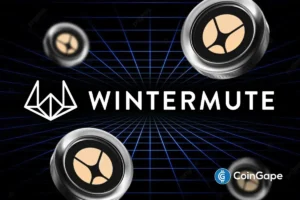The Changing Landscape of Stablecoins: USDT, USDC, and the Impact of Regulatory Forces
The landscape of stablecoins has undergone significant transformation between late 2024 and late 2025, particularly with Tether’s USDT witnessing a decline in market dominance. From a notable 70% market share in November 2024, USDT plummeted to 59.9% by October 2025. In contrast, Circle’s USDC made significant gains, rising from 20.5% to 25.3% in the same timeframe. This shift is closely entwined with the enforcement of Europe’s Markets in Crypto-Assets (MiCA) regulation, yet it reveals a more complex narrative than mere regulatory displacement.
The MiCA Framework and Its Implications
The European Union’s MiCA framework rolled out in two phases, with stablecoin-specific regulations coming into effect on June 30, 2024. The second phase, focusing on broader crypto-asset service provider requirements, began on December 30, 2024. To maintain compliance, supervisors mandated platforms to discontinue non-compliant stablecoin offerings immediately. Consequently, major European exchanges undertook preemptive measures to delist or restrict trading pairs involving USDT ahead of the approaching deadlines. Despite these regulatory pressures, Tether sought to adapt by investing in StablR, a Malta-licensed electronic money institution, to ensure compliance while preserving its brand integrity in Europe.
Dominance Decline: A Mathematical Perspective
Filippo Armani, a data researcher at Dune, provides a mathematical lens through which to view USDT’s market dominance decline. He emphasizes that while USDT’s market share decreased, its absolute figures were still on the rise. For example, USDT’s supply increased from $89.1 billion in November 2023 to $180.9 billion by October 2025. In the same period, USDC experienced explosive growth, skyrocketing from $24.3 billion to $76.3 billion. While the introduction of MiCA regulations affected the trading landscape in Europe, leading to a shift toward compliant alternatives like USDC, this does not necessarily indicate a plummet in global demand for USDT.
Regional Dynamics vs. Global Demand
Armani’s insights highlight that the shift in market dynamics is largely regional rather than indicative of diminishing global demand for USDT. While the MiCA regulations have constrained USDT’s access within Europe, Tether’s resilience persists in offshore markets and regions where regulatory constraints are less stringent. According to blockchain consultant Nikolaos Kostopoulos, the MiCA framework has limited USDT’s impact in Europe but has not significantly impaired its global standing. This distinction is crucial for investors and stakeholders considering the evolving competitive landscape of stablecoins.
Strategic Investments and Future Directions
Tether’s strategic investments in partners like StablR and Quantoz exemplify the company’s intention to maintain a foothold within the European market without diluting the USDT brand. These subsidiaries, operating under Electronic Money Institution licenses, comply with MiCA’s requirements, enabling European platforms to list their tokens, mitigating regulatory risks. Moreover, Tether plans a US-regulated stablecoin, USAT, aimed at fulfilling the GENIUS Act compliance and regaining market share, particularly among institutional buyers seeking regulatory clarity.
The Broader Competitive Landscape
The evolving competitive landscape of stablecoins continues to widen, with traditional financial institutions positioning themselves to launch stablecoins backed by established banking relationships. Innovations such as Stripe’s fast-track platform for creating stablecoins and Visa’s plans for helping banks issue tokenized fiat currencies illustrate the growing interest in stablecoin solutions from established financial players. While Tether’s USDT has showcased durable growth, doubling in supply within two years, the emergence of compliant entities designed from the ground up for regulatory environments will pose a formidable challenge.
Conclusion: Navigating Future Challenges
The future of stablecoins lies amid a complex blend of regulatory compliance, market dynamics, and evolving consumer preferences. Although Tether’s USDT continues to thrive in non-compliant jurisdictions, its ability to maintain dominance may hinge on the success of its compliant subsidiaries and new product offerings. As regional dynamics vary, the broader implications of regulatory frameworks, alongside the interests of traditional finance players, will shape the next generation of stablecoins. Decision-makers within the crypto space must navigate these challenges deftly to position themselves effectively in this rapidly changing environment.

















